
-
Find the right food for your petTake this quiz to see which food may be the best for your furry friend.Find the right food for your petTake this quiz to see which food may be the best for your furry friend.Featured products
 Hypoallergenic Small & Mini Adult Dog Food
Hypoallergenic Small & Mini Adult Dog FoodHILL'S SCIENCE PLAN Hypoallergenic Small&Mini Adult dog food with Salmon is complete pet food for adult small dogs 1–6 years old. It's formulated for dogs with delicate skin and stomach, with limited high quality novel protein sources & no grain.
Shop Now Perfect Weight Small & Mini Adult Dog Food
Perfect Weight Small & Mini Adult Dog FoodHill's Science Plan Adult Small & Mini Dog Food with Turkey is a complete premium pet food for adult small dogs from 1 year old that are prone to weight gain or slightly overweight. This deliciously smooth mousse is formulated to deliver the appropriate amount of energy to support weight maintenance in adult dogs.
Shop Now Perfect Digestion Small & Mini Adult Dog Food
Perfect Digestion Small & Mini Adult Dog FoodHill's Science Plan Perfect Digestion Small & Mini Adult Dog Food with Turkey is a complete premium pet food for small breed adult dogs aged 1–6 years. This deliciously smooth mousse is precisely balanced to deliver the appropriate amount of energy and to support digestive health in adult, small breed dogs.
Shop NowFeatured products Urinary Health Adult Cat Food with Chicken
Urinary Health Adult Cat Food with ChickenHill's Science Plan Urinary Health Adult Cat Food with Chicken supports the health of the whole urinary system. Suitable for sterilised cats.
Shop Now Oral Care Adult Cat Food
Oral Care Adult Cat FoodHill's Science Plan Oral Care Adult Cat Food with Chicken contains clinically proven kibble technology to reduce plaque & tartar build up.
Shop Now Sterilised Mature Adult Cat Food
Sterilised Mature Adult Cat FoodHill's Science Plan Sterilised Cat Mature Adult Cat Food with Chicken is specially formulated with ActivBiome+ Multi-Benefit Technology. It is a precisely balanced nutrition tailored to meet the needs of mature adult sterilised cats, ages 7+, and to promote graceful ageing.
Shop Now -
Dog
- Dog Tips & Articles
-
Health Category
- Weight
- Food & Environmental Sensitivities
- Urinary
- Digestive
- Joint
- Kidney
-
Life Stage
- Puppy Nutrition
- Adult Nutrition
- Senior Nutrition
Cat- Cat Tips & Articles
-
Health Category
- Weight
- Skin & Food Sensitivities
- Urinary
- Digestive
- Kidney
-
Life Stage
- Kitten Nutrition
- Adult Nutrition
Featured articles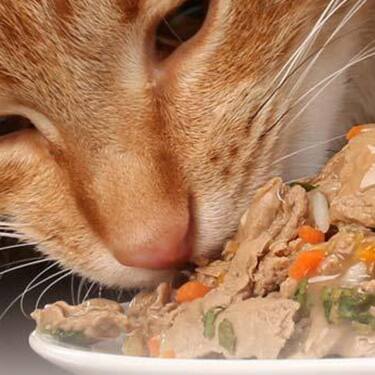 Tips For Mixing Wet And Dry Pet Food
Tips For Mixing Wet And Dry Pet FoodDiscover tips for mixing wet and dry pet food to ensure balanced nutrition and variety for your pet. For comprehensive feeding advice, visit Hill's Pet UK.
Read More Develop your gut instinct | Hill's Pet
Develop your gut instinct | Hill's PetDigestive disorders can affect any part of the digestive system, from the stomach, small intestine and through to the large intestine.
Read More Virtual Vet Visits: What You Need to Know
Virtual Vet Visits: What You Need to KnowLearn the ins and outs of a televet appointment before you talk to a vet online.
Read More -


While cats are meticulous groomers, they can still develop skin conditions. In this article, we’ll look at the 10 most common skin problems that your cat might develop, how you can spot them and what you can do to help them.
What are the signs of skin problems in cats?
Cats put a lot of time and effort into keeping their fur and skin in tip-top condition. You’ll be used to your cat’s fur being smooth and shiny, so usually when this changes, it becomes obvious pretty quickly. The exacts signs will vary depending on the underlying problem, but in general the most common signs are:
Excessive grooming
Scratching, especially around the head and neck
Fur loss
Bald patches
Scabs
Dandruff or flaky skin
What are the 10 most common skin problems in cats, and what can you do about them?
Fleas:
Fleas and other parasites are a fact of life. They don’t mean your cat is dirty or reflect badly on you! Even if your cat doesn’t go out, fleas and other parasites can be brought in on people’s clothes and visiting pets. Some cats become allergic to flea saliva and can get severe irritation from just a few bites.Fleas don’t spend much time on your cat; they live in the soft furnishings of the house, so you may never see them. The most common sign is flea dirt, black specks which are actually flea excrement.
You may also see scabs and hair loss, especially on the neck, head and around the tail base.
Talk to your vet about effective products and how often to apply them, and fleas should be easy to avoid.
Stress-induced overgrooming:
This is also called psychogenic alopecia, and it is becoming more and more common. Cats are solitary creatures by nature, and these days there are lots of cats who live with other cats in their house that they don’t like. Even single cats may often encounter cats in the garden or further away from home. Stress causes lots of issues in cats, from fur loss to vomiting and diarrhoea and even serious bladder disease such as feline idiopathic cystitis (FIC), which weakens the bladder’s lining and leads to inflammation and pain.The main sign of this in skin is hair loss from overgrooming. It’s most common on the belly and the back legs.
There are lots of things you can do to help your cat with stress, such as having one more food and water bowl than you have cats. These should be put all over the house so your cats don’t have to eat together or compete for precious resources. You can use pheromones to make them feed relaxed, and some special diets are also able to help with stress. Talk to your vet about your specific cat and what you can do to help them at home.
Atopy:
This is where cats become allergic to things in their environment such as pollen, dust mites and mould. It’s also called atopic dermatitis. As with many other skin problems, the main signs are scratching, excessive licking and fur loss.Your vet may need to do blood or skin tests to diagnose this. Your cat may need medication to reduce the reaction, and you may be able to have a special, tailor-made desensitisation treatment administered.
Food allergies:
Although food allergies can cause gastrointestinal problems, they can also manifest as itchy skin. Usually, simply changing to a therapeutic diet will keep itchiness at bay.Fungal infections:
Ringworm and yeast infections are possible causes of skin problems. These can also sometimes be infectious to humans, so watch for signs in yourself and family members too.


Tasty Tips
Your vet will prescribe anti-fungal medications which may be topical or oral. Some fungal infections can require quite long courses of treatment.
Dry skin and dandruff:
Dry skin and dandruff can be due to things such as poor diet, some medical conditions such as renal disease and also some parasites. The treatment will vary depending on the cause. You may find a diet supplemented with omega oils helps. Parasites will need treating.Ear mites:
Ear mites cause intense itchiness in cats. You’ll notice head shaking and scratching of the ears, and your cat’s ears might be waxy and dirty.Hot spots or moist dermatitis:
This is when your cat gets a bacterial infection of the skin. This is often due to self-trauma due to another problem such as allergies. Your cat may need topical or oral antibiotics, and your vet may give your cat something to stop the itching and break the cycle of trauma.Sunburn or skin cancer:
Cats, particularly white ones, are prone to sunburn, which can become cancerous. It tends to affect ear tips more than anywhere. Look for crusting and bleeding on the ear tips. Sometimes the tumours can be surgically managed and your cat can have a good prognosis. Using sun cream on white ears can help with prevention, but cats are very good at grooming it off!Reactions to medication:
Some medications can cause skin itchiness and subsequent self-trauma. Your vet may need to change their medication if this happens.
How do I know the cause of the skin problem?
Skin issues need a methodical approach because some diagnoses are made by ruling things in and others by ruling things out. Please be patient with your vet. They may want to do some or all of the following:
Skin scrapes to look for parasites
Hair pluck and culture for fungal disease
Biopsies for multiple conditions
Blood tests for environmental allergies
Food trials for food allergies
This can be time-consuming and costly, so be prepared and always consider good, comprehensive pet insurance. Your vet will try to make your cat as comfortable as possible during the diagnostic process.
Cat skin problem FAQs
What are the most common causes of cat skin conditions?
Parasites, especially fleas, and allergies, either to things like pollen or food, are by far the most common skin conditions in cats.How can I tell if my cat’s skin problem is serious?
Many skin problems present in the same way, so the seriousness will depend on the underlying problem and how long it’s been going on. This is why spotting signs early is so important.When should I take my cat to the vet for a skin issue?
As soon as you suspect a problem.Can diet affect my cat’s skin health?
Yes, absolutely. The coat and skin are often the first things to suffer from poor nutrition. Equally, certain therapeutic diets, aimed at skin disease, are enriched with nutrients like omega oils to help skin function.How can I prevent my cat from developing skin problems?
Treating fleas and being observant are your best tools to combat skin issues. Some of them you won’t be able to prevent, so vigilance is the key.
Reviewed by Dr. Hein Meyer, DVM, PhD, Dipl-ECVIM-CA and Dr. Emma Milne BVSc FRCVS.


One of our staff authors prepared this article for you
Related products
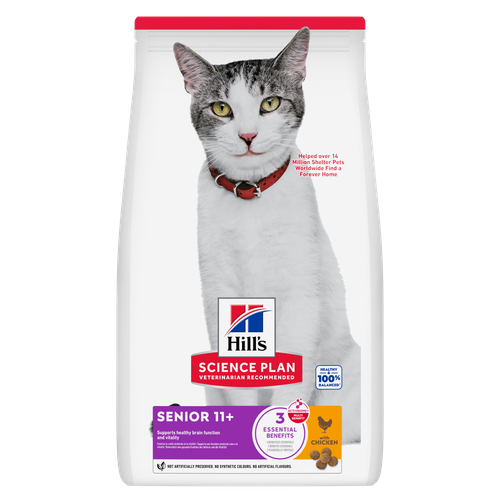
Hill's Science Plan Senior Cat Food with Chicken is a complete pet food, specially formulated with ActivBiome+ Multi-Benefit Technology.
This food supports healthy aging during the golden years. Contains a special ingredient blend to help keep older cats agile, more alert & interactive.

Hill's Science Plan Oral Care Adult Cat Food with Chicken contains clinically proven kibble technology to reduce plaque & tartar build up.

Hill's Science Plan Urinary Health Adult Cat Food with Chicken supports the health of the whole urinary system. Suitable for sterilised cats.

Hill's Science Plan Sterilised Cat Mature Adult Cat Food with Chicken is specially formulated with ActivBiome+ Multi-Benefit Technology. It is a precisely balanced nutrition tailored to meet the needs of mature adult sterilised cats, ages 7+, and to promote graceful ageing.
Related articles

Good nutrition is about the right balance of nutrients. Learn more about health issues when feeding a cat food that has an improper nutritional balance from your friends at Hills Pet Nutrition.
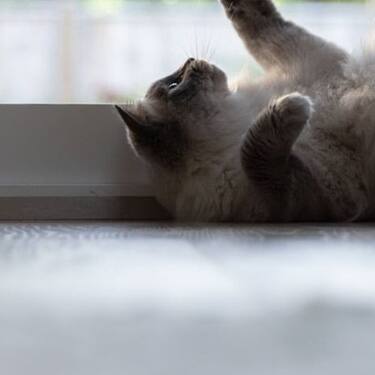
Feeding time can be a wonderful bonding opportunity for you and your cat. Find out how to make the most of it and create a healthy habit with HIll's Pet UK.

Find the right Hill
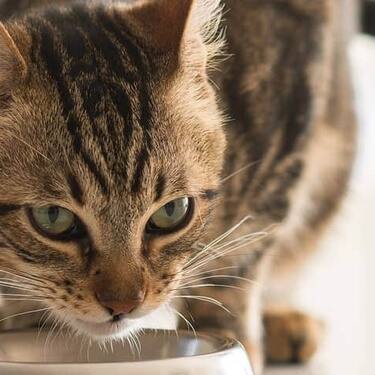
Discover what you can do to spot and support a sensitive cat stomach. See what routines and food you can implement to help your cat be happy and healthy.
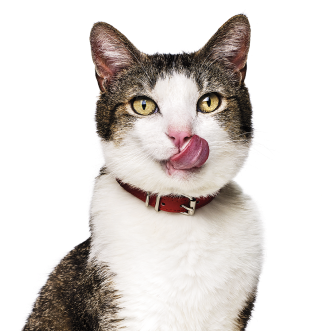
Put your cat on a diet without them knowing
Our low calorie formula helps you control your cat's weight. It's packed with high-quality protein for building lean muscles, and made with purposeful ingredients for a flavourful, nutritious meal. Clinically proven antioxidants, Vitamin C+E, help promote a healthy immune system.
Put your cat on a diet without them knowing
Our low calorie formula helps you control your cat's weight. It's packed with high-quality protein for building lean muscles, and made with purposeful ingredients for a flavourful, nutritious meal. Clinically proven antioxidants, Vitamin C+E, help promote a healthy immune system.

